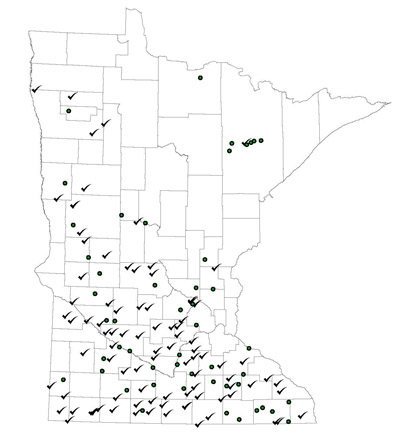Latest News
Public Works Regulations Continue to Expand
By Troy Nemmers, APWA-MN Outgoing Outstate Director
Public works departments across Minnesota continue to see additional regulations regarding water quality and quantity.
Most times these regulations require investments from rate payers to be able to support and maintain the improvements necessary. Each public works department has its own challenges and responsibilities and adding regulations has an impact. This impact may range from a small community adding staff, to significant building upgrades, to existing treatment plants.
As outgoing APWA-MN Outstate Director I have come to realize the importance of staying connected. Below are two scenarios that are currently playing out across Minnesota that should be on the radar of public works staff.
Many communities have recently or are in the process of updating their wastewater discharge permit. In many cases, the MPCA has identified additional constituents that will need to be addressed in this permit cycle. The limits for salty discharge (chlorides, sulfates, TDS) have become a significant concern for water quality, and the MPCA is setting limits for these constituents. The limits are based on the effluent discharge location and the downstream water body classification. These new regulations reach across the state and will have an impact on future water and wastewater treatment processes, as well as potential impacts to pretreatment requirements for business and industry. See map below provided by the MPCA for an overall picture of the outstate communities affected by these new regulations.

Several stakeholders are also keeping a close eye on the ground water availability evaluations that are being conducted by the MN DNR and Met Council. A lot of attention has been given to the White Bear Lake levels, or the possibility of piping and treating surface water to a large portion of the northeast metro. The costs associated with these discussions are astounding.
But two of the three current DNR groundwater management areas exist in greater Minnesota. Imagine the potential impacts to a small communities’ water supply, with a limited ratepayer base; or the cost to rural industry’s material processing, with established production demands; or to crop yields, with plants dependent on seasonal irrigation. These costs can be comparatively astounding to greater Minnesota.
The current DNR study focuses on ground water availability, but surface water availability is also drawing some attention and bringing the conversation about water re-use and increased conservation to the forefront. The results of these evaluations will have long term effects on how water is appropriated to users in the near future, as well as how we all operate our systems. Even in the Land of 10,000 Lakes, many people’s view of the value of water will change.
These two references are not meant to challenge regulation, but rather to understand that regulations will continue to expand and public works officials need to stay connected. The American Public Works Association-MN Chapter is an organization that is available for those who encounter one or more of these regulation changes. The APWA-MN offers technical resources and networking opportunities for public works employees to become informed as well as stay connected.
A great opportunity to learn about all of this and much more will come in 2016 as Minnesota is the host of the first ever PWX (formerly International Public Works Congress and Exposition). I hope to see you there.
What's New
-

Young Professionals Spotlight
March 25, 2024
-

APWA-MN Education Programs
March 25, 2024
-
Apply for the Young Professionals Stipend: Attend PWX Atlanta
February 23, 2024



